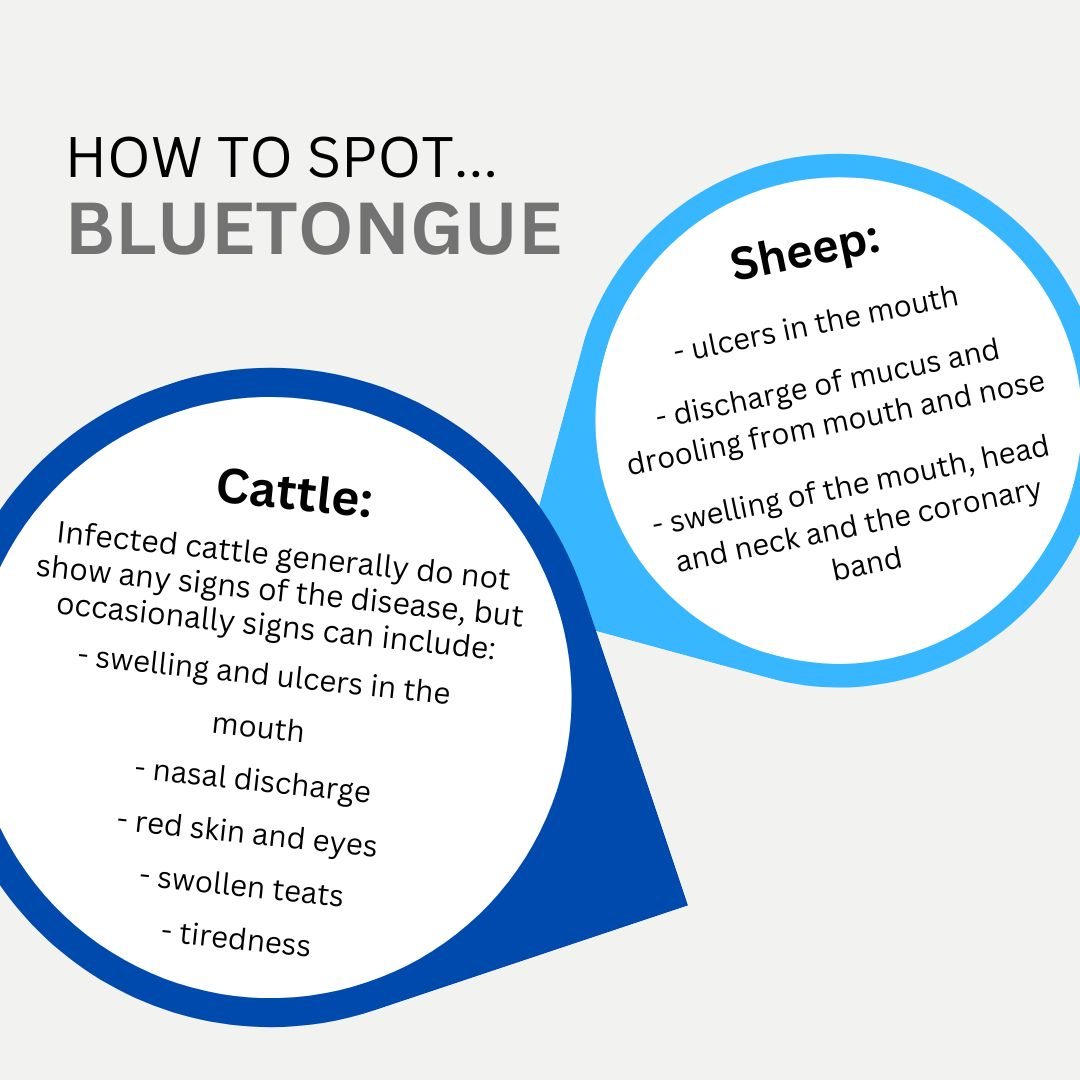Bluetongue awareness – what we know
Following reports of a new strain of bluetongue virus (BTV-3) emerging and spreading rapidly in the Netherlands, there is increasing concern about the situation, especially following a confirmed case in Canterbury, Kent, and a further 4 cases at 2 premises within the 10km temporary Control Zone.
Ruminant Health and Welfare (RH&W) has facilitated emergency meetings, bringing together over 40 key stakeholders and representatives from across the industry, to ensure the UK is prepared for this emerging disease threat.
Their advice: “What we are advising is three-fold. Farmers need to beware when buying animals in, especially from Europe, take action to report any signs of the disease, and at all times, remain vigilant,” - Dr Joseph Henry, president of the Sheep Veterinary Society and member of RH&W’s steering group.
BTV-3 is a viral disease transmitted by biting midges, which affects all ruminants (e.g., sheep, cattle, goats and deer) and camelids (e.g. llama and alpaca).
The existing BTV-8 serotype vaccine will not offer cross-protection against this new BTV-3 strain, making any likely outbreak difficult to control. Hence why it’s so important that we follow the advice to act and prioritise good biosecurity measures while remaining extremely vigilant to the disease at this stage.
It remains extremely difficult to protect against midges and a vector borne disease. However, there is always a role for good biosecurity and insecticides, but it’s important to differentiate between products licensed for use on animals, and those designed for use on building and vehicles. Our vets can advise on this if you’re unsure at all.
Due to the nature of bluetongue’s ability to spread via infected midges, and recent warm weather conditions, the confirmed case in Canterbury, Kent was likely a result of spread across the channel. With temperatures hopefully dropping, the risk of UK spread should decrease, however, we must adhere to advice and do all we can to keep it out. Advice from the advisory group is to strongly advise farmers to beware when buying livestock, and to request pre-movement testing of animals prior to departure. All imports of live animals are subject to post-import testing with restricted movements until a negative post-import test result has been confirmed, so caution is key.
Symptoms of BTV-3 can vary across ruminant livestock, with sheep generally exhibiting more overt symptoms than cattle, but both can showcase clinical signs.
These include in sheep; drooling, mouth lesions, high fever, lameness and oedema (swollen heads) and sudden death. Cattle are not usually as severely affected but may show similar clinical signs as well as teat, eye, coronary band and nose lesions.
RH&W’s advice to farmers:
- Buyer beware, only source animals responsibly.
- Take action, prioritise biosecurity and report any suspicious clinical signs.
- Vigilance is key, monitor livestock closely.

- 1st December 2023
